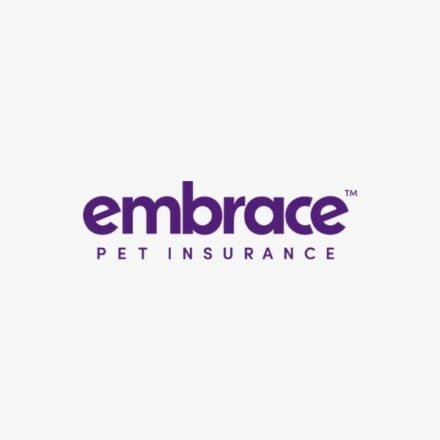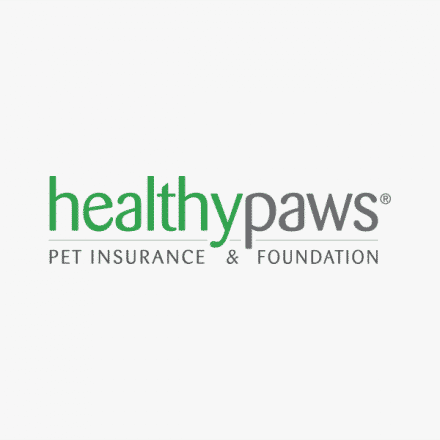Rottweilers are goofy and super sweet pooches with their family. But they are also robust and confident guardians who protect their loved ones with their lives. Affectionately known as Rotties, they have a relatively short life span of around ten years. And they are also predisposed to their fair share of health issues. So, if there’s one thing that’s important to consider for your regal Rottie, it’s pet insurance.
But with so many pet insurance companies looking to add new customers, how do you know which one offers the best pet insurance for your Rottweiler? We take you through everything you need to consider to get the best value for your money, and, more importantly, the top coverage for your Rottie should they need unexpected medical attention.
We have also handpicked and reviewed some of the best insurance companies for Rottweilers considering their breed-specific health conditions and size, making your decision easier. Pet insurance may not be the most exciting of topics, but it is one of the most important if you want to keep your dog happy and your finances healthy. So let’s get you on your way to finding your lovable Rottie the most suitable health insurance.
At A Glance

Best
Overall

Best For
Older Dogs

Best For
Bilateral Conditions
Note: Clicking the above links take you to each company’s website to learn more and get a quote. If you make a purchase, we earn a commission at no additional cost to you.
Is Pet Insurance Worth It?

According to a Liberty Mutual Insurance survey, two-thirds of respondents said they could not pay for unexpected medical bills without putting themselves into financial difficulty. This means that for most doggy owners, investing in insurance is the responsible thing to do.
We will take you through some of the common health concerns among Rottweilers and their costs below, but you can expect some bills to reach $10,000 and beyond. Pet insurance gives you peace of mind to take care of your Rottie should the worst happen, protecting your family from financial strain.
It’s essential to do your research and pick the best coverage rather than the cheapest or the first company you find. And not all insurance policies cover the predisposed health concerns common in the Rottie bloodline. After all, if the insurance does not cover what your dog needs, it isn’t worth even a penny! So, let’s take a look at the most critical health concerns for Rottweiler owners to consider.
Common Rottweiler Health Issues

You cannot predict what situations may require medical coverage. You can make an informed decision by researching common health issues in the Rottie bloodline. Here is a list of the most common health concerns you should consider when picking the best insurance for your Rottweiler.
Hip & Elbow Dysplasia
Hip and elbow dysplasia are possibly the most common health issues in large breed dogs, including the Rottie. The American College of Veterinary Surgeons (ACVS) states that genetics plays the most significant factor in joint dysplasia and other joint problems. Be sure to work with a breeder who provides you with good hip and elbow scores, as well as investing in a good-quality bed for your Rottweiler and their joints.
Sometimes, no matter how well you protect your Rottweiler, they might still experience joint dysplasia. Symptoms include mobility problems, muscle wastage, pain, and arthritis, all of which are likely to lower your Rottweiler’s quality of life. Your dog might require corrective surgery to relieve the symptoms in many cases. It can average between $3,500 and $7,000 per hip and slightly less for elbows. If your dog needs all four limbs corrected, you are looking at a huge bill.
Eye Conditions
Most dog breeds are predisposed to several eye conditions, and a good-quality breeder should screen their dogs for eye problems. The most common eye issues in the Rottie bloodline are cataracts, entropion, and progressive retinal atrophy (PRA). You can manage many eye concerns with improved hygiene and daily medication such as eye drops in the first instance. In more advanced cases, surgery is sometimes needed to prevent complete vision loss.
A one-off eye exam and the average course of antibiotic drops cost $100, sometimes more for large dogs like. However, for smaller vet bills like this, your insurance may not come into play since it is unlikely to meet your deductible.
However, if surgery is required, the bills are often much higher. For example, the average cost of surgery to treat cataracts can cost between $2,600 and $3,800 per eye. And, if both eyes need treating, you face an even higher medical bill if you are uninsured. Eye surgery is something you want to be covered because the loss of sight can significantly lower your pup’s quality of life.
Cardiac Concerns
The Rottweiler is predisposed to heart problems and heart failure, relatively common conditions among large dog breeds. The two most common heart failure causes in Rottweilers are Dilated Cardiomyopathy (DCM) and Subaortic Stenosis (SAS). In minor cases or cases detected early, these can sometimes be managed with daily medication to control the cardiac system.
However, in many cases, surgery is required to prevent heart failure and save your pup. Or, if your Rottweiler suffers from cardiac arrest, he could need life-saving emergency surgery. Surgery to resolve DCM, for example, can cost between $10,000 and $20,000 depending on the dog’s size, the severity of the disease, and any complications. Ensuring that cardiac conditions and emergency surgery are covered by your insurance provider is essential.
Bloat
Bloat is also known as gastric dilation-volvulus (GDV), and it is more common in large dog breeds with deep chests, putting your Rottie at risk. It is a life-threatening health issue that requires immediate medical attention. Bloat develops suddenly, which is why it is often called the “mother of emergencies.” It can be fatal in as little as 30 minutes and requires urgent surgery to save the dog’s life. This makes emergency surgery coverage a top priority for Rottweiler insurance.
Little is known about what causes GDV, but a genetic history of bloat, feeding once a day, eating quickly, and eating close to exercise are recognized risk factors. Life-saving emergency GDV surgery could cost between $1,500 and $7,500, depending on the severity of the case. This large medical bill is best managed with the financial assistance of an insurance provider.
Considerations When Choosing an Insurer

There are many insurance companies from which to choose, all claiming to be the best. So you need to be well informed to identify the right one for your Rottie.
While extensive options are ideal for tailoring your dog’s coverage to best meet their needs, it can make your choice complex. So, let’s look at the rules and insurance verbiage you should consider to make the best decision.
Enrollment Rules & Waiting Periods
Most insurance companies have enrollment rules, including what age they start and disallow new coverage. Some only offer coverage after eight weeks, and some cap the enrollment age at 14 years. Some companies significantly increase premiums as your dog ages, regardless of whether you’ve made a claim. Some increase is expected due to the rising cost of vet care but watch out for disproportionate increases, especially from newer, less experienced companies.
Many insurance companies also have a “waiting period.” The waiting period is the time you have to wait until your dog is covered, and each company has different waiting periods for different situations. For accidents, the typical waiting period is a few days. While for diseases and illnesses, it is usually longer. Coverage typically ranges from weeks to months, depending on the type of illness and company. Waiting periods prevent owners from taking out coverage only when they need it.
Types Of Coverage & Premiums
Here are the most common types of insurance coverage to choose from:
- Accident-only – As it sounds, this coverage is for accidents only – illness and disease are not covered here. Accident-only coverage could include being hit by a vehicle, poisoning, or ingesting foreign objects.
- Accident and Illness – Accident and illness coverage includes most accidents and illnesses. It’s important to know that pre-existing conditions are not included in any insurance coverage. Accident and illness coverage is the most popular selection among pet owners as it covers most unexpected medical expenses.
Some companies also offer a wellness plan (aka preventative care plan) during the enrollment process. This commonly covers routine vet expenses (i.e., annual exams, spay/neuter procedures, vaccinations, etc.) but varies by provider. It’s typically available as an add-on to an accident-only or accident and illness policy, but some companies allow you to purchase it without an insurance policy. This add-on coverage isn’t technically an insurance product.
To find the best option for you and your Rottweiler, you need to consider what type of plan you need and what is available within your budget. Most companies offer accident and illness coverage, but not all offer accident-only or an extra wellness plan.
The fees you pay for your Rottweiler to be covered are called “premiums,” which are usually paid monthly or annually. According to NAPHIA (North American Pet Health Insurance Association), the average monthly premium for an accident and illness insurance policy in the U.S. in 2022 was $53.34 for dogs. Of course, this varies for every dog and situation, including yours, so be sure to get multiple quotes from top-rated companies. This expense often works outs to me much more manageable for the average family than being faced with a huge, unexpected bill.
Deductibles & Claim Payouts
The “deductible” is the amount you have to pay out of pocket before the company starts covering you for reimbursement of claims made. The insurance company will not reimburse you for any claim until you have satisfied the deductible. Most companies stipulate whether you must cover the deductible annually or per incident. Typically, the higher your premium costs are, the lower your deductible. But this is not always the case, so it’s essential to work out what is best for you.
Claim payouts are another significant factors to consider when picking coverage for your Rottweiler. An insurer can cap the amount they reimburse you in several ways. This could include a limit per calendar year, per incident, or across the lifespan of your dog. Once your policy’s claim payout limit is reached, you are responsible for all additional medical costs. Compare claim payouts with the cost of common Rottie health issues above to decide what you may need. But remember, it is extremely hard to truly plan for such unexpected situations.
Exclusions
The exclusions are scenarios and conditions that are not included in the insurance coverage, another essential aspect of any insurance policy. For example, if a policy excludes hip dysplasia or cardiac issues, it might not be the best choice for your big dog. You can find the exclusions outlined in your policy documents. It’s crucial to understand what is and isn’t included before you sign up for new coverage.
Who Offers The Optimal Plan?
With all the above in mind, we have scoured the pet insurance market to find the best coverage for Rottweilers in the U.S. Here are our top Rottie insurance picks. And, once you are ready, we’ve made a free quote form that provides customized policy quotes from top pet insurance companies when you fill in your pet’s details. By entering your pet’s specific characteristics, you can get a better understanding of the coverage needed.
Best Overall Pet Insurance
Pets Best

- No age limits or restrictions
- Thorough coverage
- Some of the lowest prices in the industry
- Offers an Accident-only plan
Our leading insurance pick for most Rotties is Pets Best, and we selected them as our top winner for many reasons. First, they cover many breed-specific, hereditary, congenital, and chronic conditions, such as hip and elbow dysplasia, cardiomyopathy, and cataracts. Pets Best also offers coverage for gastric dilation volvulus issues, including emergency and scheduled surgery.
Pets Best is one of the few insurance companies to offer a fair assessment of some pre-existing conditions if it meets their criteria. Pets Best also offers coverage for behavioral problems, diagnostic testing, and prescription drugs.
Best For Older Dogs
Figo

- Excellent value for money
- Offers options for 100% reimbursement and unlimited annual payouts
- Diminishing deductible decreases by $50 each year the policyholder is claim-free until it’s $0
- Coverage includes age and weight-related concerns and hereditary and chronic conditions
Best For Bilateral Conditions (Including Patella Luxation)
Trupanion

- One of the only companies with no bilateral exclusions
- Claims can be paid in less than 5 minutes via Trupanion Express
- 90% reimbursement and unlimited payouts for all plans
- Offers enrollment from birth
Other Options
Embrace

- Premium reduces by $50 per year if no claims are made
- Covers curable pre-existing conditions, dependent on evaluation
- Exam fees included in all policies
- Offers coverage for behavioral therapy and training
- Dental treatment included
Healthy Paws

- Unlimited annual and lifetime payouts for all plans
- Fastest claim payout, on average, compared to others
- Excellent value and competitive price
- High customer satisfaction ratings
Lemonade

- AI-driven claims process
- Not available in every U.S. state
- Ability to bundle with homeowners or renters insurance policies
- Optional wellness coverage
How To Save Money

Every little bit helps, so here are a few ways you might save a little bit of money:
Increase The Deductible
You can often reduce your monthly or yearly premium by increasing the deductible amount, which is the upfront money you are responsible for. But before you do this, you need to be sure that you can pay the increased amount in the event that you need to file a claim.
Pay Annually
Most insurance companies offer their customers two ways of paying premiums: monthly or annually. If you choose to pay monthly, some companies may charge a nominal “transaction fee.” However, if you pay the premium as a one-off annual amount, most companies do not charge an extra fee, allowing you to save a little cash.
Multi-Pet Discount
Some insurance companies offer a multi-pet discount if you take out policies with them for several pets. You may be able to save as much as 10% in multi-pet discounts if you meet your company’s conditions. Remember that it’s crucial to tailor individual coverage to each pet to ensure their particular needs are met. Some companies only offer multi-pet discounts on additional pets (not the first), so be sure to clarify this point before enrolling in a new policy.
Final Thoughts
Like all dogs, Rottweilers can be expensive pets to own, especially when considering their potential medical expenses. Investing in insurance coverage for your Rottie is often wise because it ensures that you are supported when faced with unexpected medical bills. Although you can never predict the future, there are many ways listed above that you can provide the best possible coverage for you and your Rottweiler.
Remember that the difference is in the details, so be sure to read the fine print before signing on the dotted line. Always pick the best option for your Rottweiler depending on their individual needs, which might not be the same as what you’ve chosen for a previous Rottie pet. If there is still something that you are not sure about, it’s essential to speak to the insurance company for clarity or your vet for independent knowledge.





